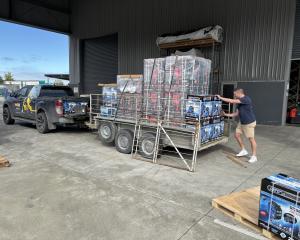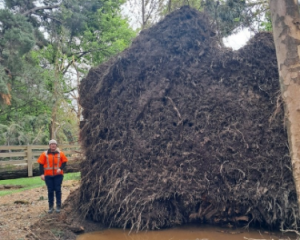A list originally naming 2000 sites across Otago suspected of chemical contamination has been released, but only after itself being cleaned up by the Otago Regional Council.
The release comes more than six months after ORC staff released a list of 140 confirmed contaminated sites across Otago, but refused to disclose a much larger list of 2000 suspected contaminated sites.
The decision to withhold the list was reversed earlier this month, after the ODT referred the council's decision to the Office of the Ombudsmen, but only after ORC staff reviewed and updated the list's contents.
Contacted late last week, ORC resource management director Selva Selvarajah said the original list of 2000 suspected sites was based on information provided during the 1990s, and was updated before being made public.
The Ministry for the Environment had, in the early 1990s, provided the ORC with a list of about 350 sites it considered contaminated.
The list had grown to about 2000 suspected sites in the late 1990s, after the Australian and New Zealand Environment Conservation Council (ANZECC) issued advice to all regional councils about risks posed by different land uses, he said.
ORC staff had then used business directories to identify specific operations within Otago that met those land use types, and included them on its list of potentially contaminated sites.
Many of the entries lacked evidence of contamination, or even addresses, and the list had not been updated in a decade, Dr Selvarajah said.
As a result, a recent staff review led to those entries with questionable information being removed before the list's publication last month, he said.
That left only those where there was the possibility for something "really harmful" on site, in addition to the already-released list of confirmed sites, he said.
The ORC's regular monitoring of stormwater discharges showed no signs of a serious contamination problem, he said.
Asked if the council should be more proactive in inspecting potentially contaminated sites, Dr Selvarajah said: "I don't think the regional council should be going down that track."
"Are we going to have to check these [sites] every month or every year? You are talking about hundreds of thousands of dollars being spent on such things."
It was up to the Environmental Risk Management Authority to regulate the use of hazardous chemicals, he said.
Property owners were required to report contamination to the ORC, which classified problems based on whether they were contaminated, managed or remediated (cleansed of contamination).
Staff were otherwise only involved if contamination occurred and threatened to spread, he said.
Information from the list would be available to the public on a "site-specific basis" upon request, he said.












